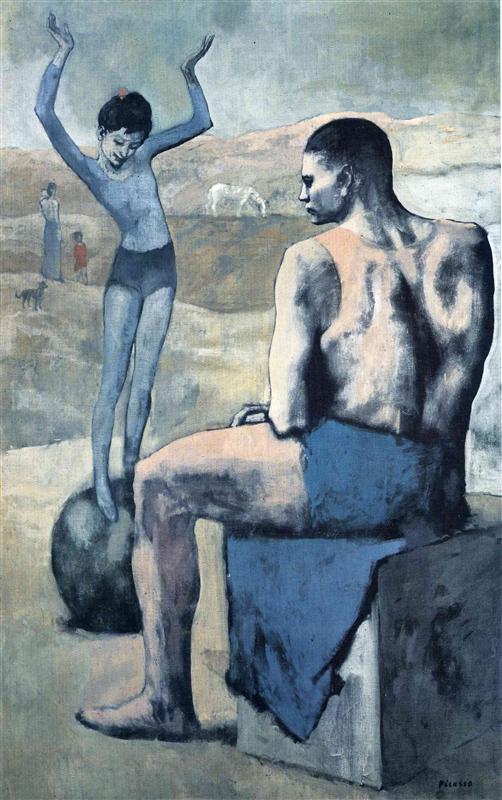“Le Rêve” (French – “Dream”), or “A Dream” (English – “Dream”), or “Dream” (Russian version) is considered one of the most famous masterpieces of Picasso’s period of “great eroticism” and the most refined an example of Painting Sex. The popularity of the picture can be explained not only by its explicit erotic overtones, but also by the incident that happened to her in 2006. As for the painting, “Le rêve” was painted by Picasso in one day on January 24, 1932 in Boisgeloup. The painting depicts the artist’s mistress-muse Maria-Teresa Walter – a blonde beauty with a Greek profile – lounging with her eyes closed in a bright red chair. Picasso was at that time 51 years old, and his captivating model was only 22, the last 5 years of which she spent in love with the artist.
Along with simplified, flowing and elastic lines, bold color and rounded shapes, the painting is a frank representation of who Maria Teresa was for Picasso – just a sexual object. Not equal in all aspects of development, not a life partner or wife, not even an ordinary friend, but simply a toy, a bottomless source of sexual excitement and satisfaction for the artist. The strong and direct eroticism of the picture indicates, without any ambiguity, the experience of physical love with this woman, describing his sensuality and, above all, sexual satisfaction. The voluptuous content of “Le Rêve” was repeatedly noted by critics, who argued that the picture was filled with explicit sexual innuendo. The most remarkable indication is the depiction of the male genital organ on the tilted face of the model. If you look closely, you can really recognize the phallic symbol in the upper half of Maria Teresa’s forked face. According to the original title of the painting, “Le Rêve” is translated from French as “Dream” – thus the picture depicts the process of “dreams” and these dreams directly concern Picasso and, in particular, his gender. Some experts in addition to this find the process of transformation of the scarlet lips of Marie-Teresa into a vagina. Also, the obvious sexual connotation implies a play of hands, and to be more precise, their location – they rest in the lower abdomen of Walter. A hint of sexual gratification can be interpreted with the head thrown back, as if Maria Teresa succumbed to sweet ecstasy. Her blouse falls elegantly from the shoulders, revealing a rounded chest and accentuating the undulating movement along with the lullaby rhythm that permeates the whole picture. The ribbon of the yellow-red necklace rises and falls in time with the calm, measured breathing. It seems that Maria Teresa is soft and elastic at the same time. Her skin is slightly greenish with a silvery sheen. This pale green fades into lilac shadows while maintaining magical transparency. Even dressed up, Maria Teresa looks soft and carefree, with an obvious sense of joy and inexhaustible vitality. The colorful coloring of the picture, together with the harmony of lines, create a contrast: a bright red armchair echoes the green of the background, and the freshness of the silvery skin tone is emphasized by the warm brown color of the curtains. These sensual allusions throughout the painting indicate that Walter’s sex is not only on the mind (phallic presence on the face), but also between the legs (the position of the hands on the abdomen). Marie-Teresa’s face looks like a fellatio. According to Picasso biographer John Richardson, the painting depicts sex on a subconscious, mental level. But the current owner Steve Weein thinks differently and has a worthy explanation on this. His perception of all these sexual aspects is explained as follows: “If you are a 51-year-old man and you have a 21-year-old girlfriend, then it is only natural that this is the imagination of Picasso himself, and not his mistress. Every 51-year-old man wants or hopes that his passion dreams exclusively of him and his body. This is a kind of wishful thinking symbol. ” Therefore, presumably the title of the picture may refer closer to the dream of Picasso, and not Walter.
Year of painting: 1932.
Dimensions of the painting: 130.2 x 97 cm.
Material: canvas.
Writing technique: oil.
Genre: portrait.
Style: cubism.
Gallery: private collection.



